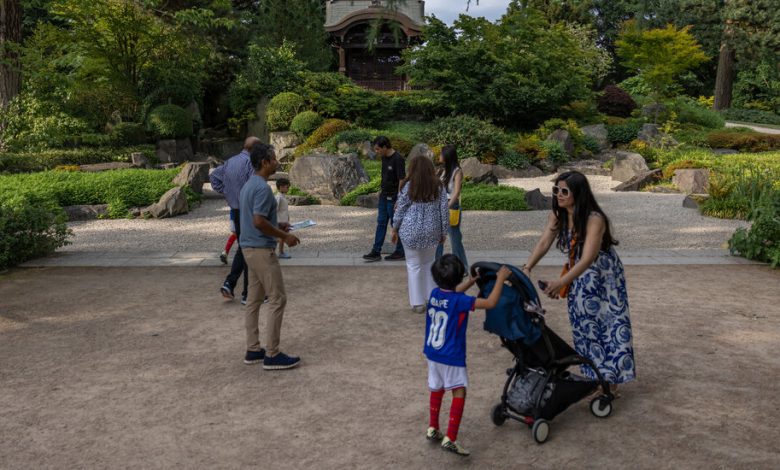London’s Kew Gardens Has Long Links to Japan. Now the Emperor Is Set to Visit.

When Emperor Naruhito and his wife, Empress Masako, of Japan visit Kew Gardens on Thursday as part of a state visit to Britain, the links between their island nation and the famed London landmark will be on full display.
Dotted through the botanic gardens’ 330 acres are constant reminders of that longstanding relationship. In a large greenhouse, bronze sculptures of bonsai trees — some nearly the height of the room — stand in tribute to the Japanese horticultural art form. A short walk away is the Japanese Gateway, an intricately carved cypress replica of a Kyoto temple. Nearby, gravel neatly raked into waves and swirls surrounded by Japanese plant species evokes a traditional tea garden.
Dignitaries and heads of state from many countries regularly stop by Kew Gardens during official tours, joining the crowds that account for roughly 2.3 million visits annually at one of London’s most popular tourist destinations. But, for the emperor and empress, the site will perhaps hold even more relevance.
“We have had a longstanding and close relationship with Japan, which can be seen through several beautiful structures in our landscape, but also in our living collections as well as our economic botany and art collection,” said Richard Deverell, the director of Royal Botanic Gardens Kew, the organization that runs the site, recalling the gardens’ monthlong festival in 2021 celebrating the relationship.
The lineage of the emperor, 64, traces back more than 15 centuries, making the Chrysanthemum Throne the world’s oldest monarchy. But much like that of the British royal family, the role of Japan’s imperial family is symbolic and separate from the country’s government.
